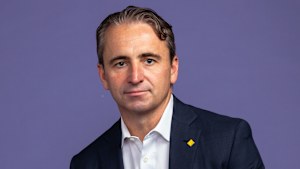A few months ago, on the morning 23andMe was about to go public, chief executive Anne Wojcicki received a framed sheet of paper she hadn’t seen in 15 years.
As she was preparing to ring in the Nasdaq bell remotely from the courtyard of her company’s Silicon Valley headquarters, Patrick Chung, one of its earliest investors, presented her with the pitch document she’d shown him when she was first asking for money. The one-sheeter outlined a radical transformation in the field of DNA testing.
Bloomberg Businessweek



